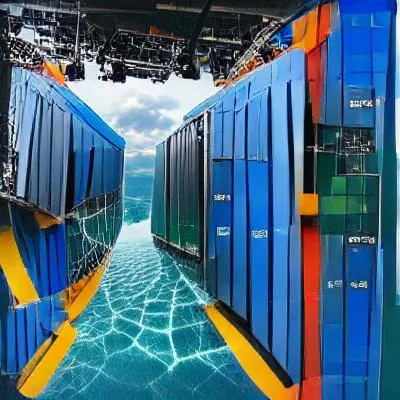In today’s fast-paced technology landscape, virtualization and containerization have become essential tools for improving the efficiency and flexibility of Linux infrastructure.
Virtualization allows multiple operating systems to run on the same physical server, while containerization involves packaging applications and their dependencies into isolated containers that can be easily deployed and managed.

What is the difference between virtualization and containerization?
But what exactly is the difference between virtualization and containerization?
Virtualization creates a virtual version of a physical server or machine, complete with its own operating system and all of it’s entirety and dependencies, whereas containerization involves packaging an application and its dependencies into a single, portable container that can run on any Linux server.
One of the main benefits of virtualization is the ability to run multiple operating systems on the same physical hardware, which can save on costs and improve hardware utilization.
On the other hand, using a Container offers a more lightweight and efficient way to package and deploy applications, making it easy to run multiple instances on the same server and move them between different environments.
In summary, virtualization provides a full virtual environment with high isolation, while containers provide a lightweight solution with shared resources and lower isolation.
When it comes to getting started with virtualization and containers, there are a variety of options available.
Virtualization
For virtualization, popular choices include:
- VMware Workstation Pro
- Oracle VirtualBox
- Microsoft Hyper-V
- Citrix XenServer
- Red Hat Virtualization
- KVM (Kernel-based Virtual Machine)
- Proxmox Virtual Environment
- Nutanix Acropolis
- OpenStack
- Docker (Containers)
Containers
For containerization, popular choices include
- Docker: One of the most widely used and popular container software platforms that provides a standardized way to package and deploy applications.
- Kubernetes: An open-source platform for automating deployment, scaling, and management of containerized applications.
- OpenShift: An open-source container application platform based on Docker and Kubernetes.
- Rancher: An open-source platform for managing containers that provides a complete management solution for multi-node and multi-cluster deployments.
- Mesosphere DC/OS: An open-source platform for deploying and managing containerized applications on multi-cloud and on-premises environments.
- Amazon Elastic Container Service (ECS): A managed container platform offered by Amazon Web Services (AWS) that allows you to run and manage Docker containers.
- Google Kubernetes Engine (GKE): A fully managed Kubernetes service offered by Google Cloud that makes it easy to run and manage containerized applications
Cloud services
There are various other cloud services you can spin up a Linux virtual machine, some have been mentioned above but here’s a full list below:
- Amazon Web Services (AWS)
- Microsoft Azure
- Google Cloud Platform (GCP)
- Oracle Cloud Infrastructure
- Alibaba Cloud
- IBM Cloud
- DigitalOcean
- Rackspace
- Heroku
- Dimension Data Cloud
To learn more about virtualization and containerization, check out resources such as the VMware website, the Docker documentation, and the Kubernetes website. These resources can provide you with the information you need to understand the basics and get started with using virtualization and containerization to improve your Linux infrastructure.
Join Our Community!
🌟 Get exclusive insights and the latest IT tools and scripts, straight to your inbox.
🔒 We respect your privacy. Unsubscribe at any time.
